#Honorary Texan Burger
Explore tagged Tumblr posts
Text





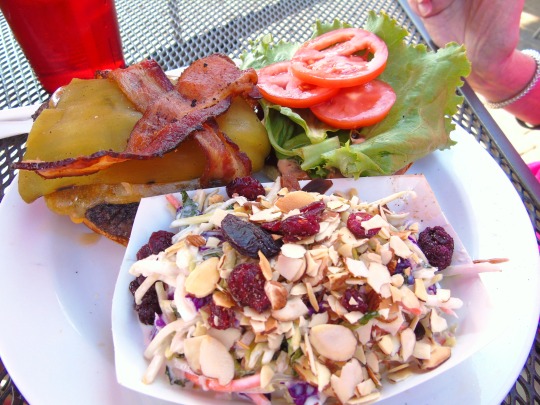












National Walnut Day
Go nuts for walnuts! These crunchy delights pack a punch of flavor and nutrition in every bite. Sprinkle them on salads, bake them into treats, or snack on them straight from the bag. It's a nutty good time!
Go nuts about walnuts in honor of National Walnut Day! This ancient, healthful nut makes a great addition to sweet treats, salads, trail mixes and so many other interesting dishes. While other nuts often take center stage, the walnut is absolutely worth celebrating and appreciating on National Walnut Day.
History of National Walnut Day
As the oldest known tree that has provided food to humans, walnuts have a history that can be traced back for thousands of years. It didn’t take long for humans to discover that the walnut is an easy to store and simple to eat nut. Plus, it travels well and offers great nutritional benefits.
In Persia, the walnut was referred to as the Royal Nut and it was only allowed to be eaten by people of royal heritage. During the reign of Alexander the Great, the walnut was brought to Greece from Persia and it was referred to as the Persian Nut for more than 1000 years. However, over time, the Greek version became smaller and inferior to the Persian walnut. In fact, the Greeks were envious of the Persian walnut, so they brought some Persian cultivars back to Greece to improve their breeds.
The Greek name for the walnut is karyon, which means head. This is actually fairly spot on, because the outside shell resembles a human head and the interior nut looks a bit like a brain!
Walnuts likely made their way further into Europe somewhere between 500–700 BC and then moved west after that. The nut probably traveled to the British Isles with the Roman Empire. It was somewhere around this point that it picked up its name “English walnut”, which is used to distinguish it from the black walnut.
Eventually, the walnut crossed the ocean and found a path to the New World. It was a group of Franciscan Fathers who found that the climate of Southern California was an important one for growing these deciduous trees. And this is likely the reason they picked up the name “mission walnuts”. California walnuts have become so popular that they account for 99% of the commercial walnut industry in the United States, a large portion of walnut trade in the world.
National Walnut Day dates back more than 70 years! It was in 1949 that the Walnut Marketing Board in the United States established the day with the purpose of celebrating and promoting this delicious and nutritious nut. US President Dwight D. Eisenhower made the day a public holiday in 1958 and National Walnut Day has continued to be celebrated every year since that time.
National Walnut Day Timeline
7000 BC Humans cultivate walnuts
The oldest tree food known to man, walnuts are cultivated starting in Persia.
1754 BC First documented account of the walnut
The cultivation of the walnut is mentioned in The Code of Hammurabi, the oldest code of laws in the world.
600 BC Walnut plants arrive in Europe
Around this time, the walnut plant makes its way from Persia into Europe.
17th Century AD Walnuts land in America
English settlers are responsible for bringing walnut plants to the New World.
Late 1900s Walnuts are cultivated in Chile
The climate in Chile does well for growing walnuts and the country eventually becomes the world’s third largest walnut exporter.
How to Celebrate National Walnut Day
Enjoy tons of fun on National Walnut Day by celebrating in style with some of these tasty ideas:
Learn Some Health Benefits of Walnuts
National Walnut Day is a perfect time to get a bit more familiar with some of the health benefits that are offered by this little nut. Take a look at these ways that the walnut is a healthy choice for snacking and baking:
Filled with Antioxidants
High in Healthy Fat
Promotes Gut Health
May Decrease Inflammation
Walnuts contain the most antioxidants of any of the commonly eaten nuts. The high Vitamin E content, melatonin and polyphenols can help to prevent oxidative damage and promote the lowering of “bad” cholesterol.
Omega-3 fat is an essential ALA (alpha-linolenic acid) that is a vital part of the human diet, especially for the prevention of heart disease. A single one ounce serving of walnuts provides a full daily supply of this important nutrient.
Walnuts offer essential bacteria and microbes that help with the functioning of overall gut health.
One of the common triggers for health problems in inflammation and walnuts offer nutrients, such as polyphenols, that can reduce oxidative stress that tends to cause inflammation. This could be beneficial in reducing heart disease, type 2 diabetes, Alzheimer’s disease and even cancer.
Make Some Candied Walnuts
While candied pecans and toasted almonds are often thought of as some favorite snacks made from nuts, candied walnuts are absolutely worth trying out. Candied walnuts are delicious for snacking, adding as a topping to salads or used as a garnish on cakes and other sweet treats. And, they’re super easy to make!
Really, it’s as simple as just three ingredients: walnuts, butter and sugar. Add all of the ingredients to a skillet and heat for five minutes over medium heat, stirring constantly. Separate nuts on parchment paper and allow to cool.
Share Fun Facts About Walnuts
One super clever way to raise awareness about the goodness and health of walnuts might be to learn a few bits of trivia about this nut that can be shared. Tell friends and coworkers about some fun facts while encouraging them to celebrate National Walnut Day in their chosen fashion.
Get started with some of these:
Even since ancient times, walnuts have been used for various health benefits and have even been considered to be medicinal for treating issues such as bad breath, wound healing and reduction of inflammation.
Walnut trees can grow to be very large, up to 60 feet tall. They can produce walnuts for more than 100 years!
Walnuts are best when kept cool, so it’s ideal to store them in the refrigerator or freezer for the best flavor and the longest life.
The state of California produces approximately one billion pounds of walnuts every single year. Now that’s a whole lot of nuts!
Make Baked Goods with Walnuts
Enjoy the delicious National Walnut Day by getting some walnuts for the kitchen and adding them to a variety of baked goods. This might mean adding chopped walnuts to a loaf of banana bread, a selection of oatmeal muffins, a pan of freshly baked brownies or a variety of other tasty baked treats. Be sure to bake up extra treats with walnuts and pass them out at work, share them with neighbors and offer them to family members in observance of National Walnut Day!
National Walnut Day FAQs
Are walnuts good for you?
Some studies have shown that walnuts are a source of vitamins and minerals, as well as lowering “bad” cholesterol.
How to toast walnuts?
Walnuts can be toasted in a single layer for 8-10 minutes at 350 F.
Can dogs eat walnuts?
Though it may not hurt them to have a stray walnut, dog owners should avoid feeding them to dogs as they can be a choking hazard.
Do walnuts go bad?
When exposed to heat for a period of time, walnuts can begin to smell rancid and taste bad.
Do walnuts have protein?
Yes, walnuts have 4.5 grams of protein per ¼ cup.
Source
#Lemon Semifreddo with walnut florentine#Manjar blanco with honey and nuts#dessert#restaurant#salami#olives#Tartufo#Germany#Spain#travel#vacation#Chef's Salad#Chocolate Frey#Lindt & Sprüngli#Lindt#Swiss chocolate is the best#I only eat Swiss chocolate#Lindt Pralines Connaisseurs#Lindt Pralinés du Confiseur#Honorary Texan Burger#USA#National Walnut Day#17 May#original photography#NationalWalnutDay
3 notes
·
View notes
Text



















National Walnut Day
Go nuts for walnuts! These crunchy delights pack a punch of flavor and nutrition in every bite. Sprinkle them on salads, bake them into treats, or snack on them straight from the bag. It's a nutty good time!
Go nuts about walnuts in honor of National Walnut Day! This ancient, healthful nut makes a great addition to sweet treats, salads, trail mixes and so many other interesting dishes. While other nuts often take center stage, the walnut is absolutely worth celebrating and appreciating on National Walnut Day.
History of National Walnut Day
As the oldest known tree that has provided food to humans, walnuts have a history that can be traced back for thousands of years. It didn’t take long for humans to discover that the walnut is an easy to store and simple to eat nut. Plus, it travels well and offers great nutritional benefits.
In Persia, the walnut was referred to as the Royal Nut and it was only allowed to be eaten by people of royal heritage. During the reign of Alexander the Great, the walnut was brought to Greece from Persia and it was referred to as the Persian Nut for more than 1000 years. However, over time, the Greek version became smaller and inferior to the Persian walnut. In fact, the Greeks were envious of the Persian walnut, so they brought some Persian cultivars back to Greece to improve their breeds.
The Greek name for the walnut is karyon, which means head. This is actually fairly spot on, because the outside shell resembles a human head and the interior nut looks a bit like a brain!
Walnuts likely made their way further into Europe somewhere between 500–700 BC and then moved west after that. The nut probably traveled to the British Isles with the Roman Empire. It was somewhere around this point that it picked up its name “English walnut”, which is used to distinguish it from the black walnut.
Eventually, the walnut crossed the ocean and found a path to the New World. It was a group of Franciscan Fathers who found that the climate of Southern California was an important one for growing these deciduous trees. And this is likely the reason they picked up the name “mission walnuts”. California walnuts have become so popular that they account for 99% of the commercial walnut industry in the United States, a large portion of walnut trade in the world.
National Walnut Day dates back more than 70 years! It was in 1949 that the Walnut Marketing Board in the United States established the day with the purpose of celebrating and promoting this delicious and nutritious nut. US President Dwight D. Eisenhower made the day a public holiday in 1958 and National Walnut Day has continued to be celebrated every year since that time.
National Walnut Day Timeline
7000 BC Humans cultivate walnuts
The oldest tree food known to man, walnuts are cultivated starting in Persia.
1754 BC First documented account of the walnut
The cultivation of the walnut is mentioned in The Code of Hammurabi, the oldest code of laws in the world.
600 BC Walnut plants arrive in Europe
Around this time, the walnut plant makes its way from Persia into Europe.
17th Century AD Walnuts land in America
English settlers are responsible for bringing walnut plants to the New World.
Late 1900s Walnuts are cultivated in Chile
The climate in Chile does well for growing walnuts and the country eventually becomes the world’s third largest walnut exporter.
How to Celebrate National Walnut Day
Enjoy tons of fun on National Walnut Day by celebrating in style with some of these tasty ideas:
Learn Some Health Benefits of Walnuts
National Walnut Day is a perfect time to get a bit more familiar with some of the health benefits that are offered by this little nut. Take a look at these ways that the walnut is a healthy choice for snacking and baking:
Filled with Antioxidants
High in Healthy Fat
Promotes Gut Health
May Decrease Inflammation
Walnuts contain the most antioxidants of any of the commonly eaten nuts. The high Vitamin E content, melatonin and polyphenols can help to prevent oxidative damage and promote the lowering of “bad” cholesterol.
Omega-3 fat is an essential ALA (alpha-linolenic acid) that is a vital part of the human diet, especially for the prevention of heart disease. A single one ounce serving of walnuts provides a full daily supply of this important nutrient.
Walnuts offer essential bacteria and microbes that help with the functioning of overall gut health.
One of the common triggers for health problems in inflammation and walnuts offer nutrients, such as polyphenols, that can reduce oxidative stress that tends to cause inflammation. This could be beneficial in reducing heart disease, type 2 diabetes, Alzheimer’s disease and even cancer.
Make Some Candied Walnuts
While candied pecans and toasted almonds are often thought of as some favorite snacks made from nuts, candied walnuts are absolutely worth trying out. Candied walnuts are delicious for snacking, adding as a topping to salads or used as a garnish on cakes and other sweet treats. And, they’re super easy to make!
Really, it’s as simple as just three ingredients: walnuts, butter and sugar. Add all of the ingredients to a skillet and heat for five minutes over medium heat, stirring constantly. Separate nuts on parchment paper and allow to cool.
Share Fun Facts About Walnuts
One super clever way to raise awareness about the goodness and health of walnuts might be to learn a few bits of trivia about this nut that can be shared. Tell friends and coworkers about some fun facts while encouraging them to celebrate National Walnut Day in their chosen fashion.
Get started with some of these:
Even since ancient times, walnuts have been used for various health benefits and have even been considered to be medicinal for treating issues such as bad breath, wound healing and reduction of inflammation.
Walnut trees can grow to be very large, up to 60 feet tall. They can produce walnuts for more than 100 years!
Walnuts are best when kept cool, so it’s ideal to store them in the refrigerator or freezer for the best flavor and the longest life.
The state of California produces approximately one billion pounds of walnuts every single year. Now that’s a whole lot of nuts!
Make Baked Goods with Walnuts
Enjoy the delicious National Walnut Day by getting some walnuts for the kitchen and adding them to a variety of baked goods. This might mean adding chopped walnuts to a loaf of banana bread, a selection of oatmeal muffins, a pan of freshly baked brownies or a variety of other tasty baked treats. Be sure to bake up extra treats with walnuts and pass them out at work, share them with neighbors and offer them to family members in observance of National Walnut Day!
National Walnut Day FAQs
Are walnuts good for you?
Some studies have shown that walnuts are a source of vitamins and minerals, as well as lowering “bad” cholesterol.
How to toast walnuts?
Walnuts can be toasted in a single layer for 8-10 minutes at 350 F.
Can dogs eat walnuts?
Though it may not hurt them to have a stray walnut, dog owners should avoid feeding them to dogs as they can be a choking hazard.
Do walnuts go bad?
When exposed to heat for a period of time, walnuts can begin to smell rancid and taste bad.
Do walnuts have protein?
Yes, walnuts have 4.5 grams of protein per ¼ cup.
Source
#cheeseboard#Hess Persson Estates#Lemon Semifreddo with walnut florentine#Manjar blanco with honey and nuts#restaurant#Tartufo#Germany#Spain#travel#vacation#Chef's Salad#Chocolate Frey#Lindt & Sprüngli#Swiss chocolate is the best#I only eat Swiss chocolate#Lindt Pralines Connaisseurs#Lindt Pralinés du Confiseur#Honorary Texan Burger#USA#National Walnut Day#17 May#original photography#NationalWalnutDay
0 notes
Text





























Fresh Tomato Day
Fresh Tomato Day is celebrated on April 6, as a day to appreciate the beauty of fresh tomatoes. Tomatoes are plants that are grown in temperate and tropical regions of the world and are a significant source of umami flavor. They are typically consumed raw or cooked. It is common to find that numerous varieties of the tomato plant are widely grown in temperate climates across the world, with purpose-built greenhouses aiding the production of tomatoes throughout all the seasons of the year. Tomato plants typically grow between three and 10 feet in height, with vines and a weak sprawling stem.
History of Fresh Tomato Day
The tomato is said to have descended or evolved from the “Solanum pimpinellifolium,” which is also known as the currant tomato or wild tomato, native to western South America. These wild tomatoes were smaller than the tomatoes we have in today’s times and they were usually about the size of peas. The domestication, so to speak, of tomatoes, traces back to the Aztecs and other Mesoamerican peoples, who used the fruit fresh and employed its use for cooking. Tomatoes came into Europe through the Spanish, and they became a very regular feature of Spanish food. In other European countries such as France, Italy, and others to the North of Europe, the tomato was initially grown as an ornamental plant, like flowers.
The tomato was met with skepticism as a type of food based on the fact that it was thought to be nightshade by botanists. This skepticism and suspicion were compounded by the acidity of the tomato juice. The tomato was even nicknamed the “poison apple,” because it was believed that it caused aristocrats to get sick and die after eating them. The possible reason for these reactions was that wealthy Europeans of that time, used pewter plates, which were rich in lead, and because tomatoes are so high in acidity, the fruit would leach lead from the plate upon coming in contact with it, eventually leading to led poisoning and eventually death.
Limited knowledge made it impossible for anyone at the time to connect the dots between plate and poison at the time and so the easier alternative was to blame the tomato. The leaves of the tomato and its immature fruit contain tomatin, which could be toxic in large amounts. However, the ripe tomato fruit does not contain tomatin.
Fresh Tomato Day timeline
700 A.D. Earliest Known Use of Tomatoes
The earliest known use of tomatoes traces back to the Aztecs from around 700 A.D. who use them to cook their food.
1800s Migration Brings Tomatoes to America
The mass migration of Italian people to America is credited with the introduction of tomatoes in America.
1889 Esposito of Naples Makes a Tomato Pizza
On a visit of the King and Queen of Italy to Naples in 1889, Esposito makes a pizza with tomato toppings.
2005 Earliest Mention of F.T.D. in Print
The earliest mention of Fresh Tomato Day is in a newspaper.
Fresh Tomato Day FAQs
What is Fresh Tomato Day?
Fresh Tomato Day, celebrated on April 6, is a day meant to appreciate the beauty and benefits of fresh tomatoes.
Are tomatoes healthy?
Yes, they are. Tomatoes are good for the human heart and consuming them once in a while would keep you healthy for longer.
Is a tomato a fruit?
Yes, a tomato is technically a fruit that is sometimes considered a vegetable. It is an edible part of a plant with seeds, and as such, is a fruit.
Fresh Tomato Day Activities
Eat some tomatoes
Host a tomato-throwing party
Share on social media
What better way to celebrate Fresh Tomato Day than to simply eat (or drink) some? Make a tomato sandwich, or order some tomato pizza; either way, you’re good to go.
Another fun idea for Fresh Tomato Day is to host a tomato-throwing party. This would be fun, but be careful not to waste too many tomatoes.
Share all the fun and join the online tomato conversation using the #FreshTomatoDay hashtag. Share the history of the day online!
5 Interesting Facts About Tomatoes
There are 10,000 varieties of tomatoes
The first tomatoes were gold
Tomatoes have color varieties
‘Tomato’ is a Spanish word
China is the largest tomato producer
Tomatoes have up to 10,000 distinct varieties.
The first tomatoes were not red as we know them today, but were gold-colored and widely considered to be aphrodisiacs.
They have varying colors such as purple, green, and white, however, only red tomatoes are displayed at markets for quality standard purposes.
The origin of the word ‘tomato’ is from the Spanish word ‘tomate.’
China produces the largest number of tomatoes in the whole world!
Why We Love Fresh Tomato Day
Tomatoes are healthy
Tomatoes are tasty
Tomatoes can be consumed in various ways
Tomatoes have been proved to be good for the human heart. We love this!
Tomatoes are tasty, especially when cooked or used as a flavoring in food. There’s nothing better than the taste of fresh tomatoes in your spaghetti bolognese!
Tomatoes aren’t only cooked as a soup or used as pizza toppings. They can also be consumed as a healthy drink or simply consumed raw.
Source
#Chicken Enchilada#melon tomato salad#Smothered Green Chili Cheeseburger#Bacon Avocado Burger#I don't like fresh tomatoes and I can't eat them#Hero Panini#Navajo Taco#Taco Salad#Chicken Tostadas#Honorary Texan Burger#Fresh Tomato Day#6 April#food#travel#vacation#USA#Spain#original photography#FreshTomatoDay#Canada#Mexican Steak Taco#Chicago Hot Dog
1 note
·
View note
Text

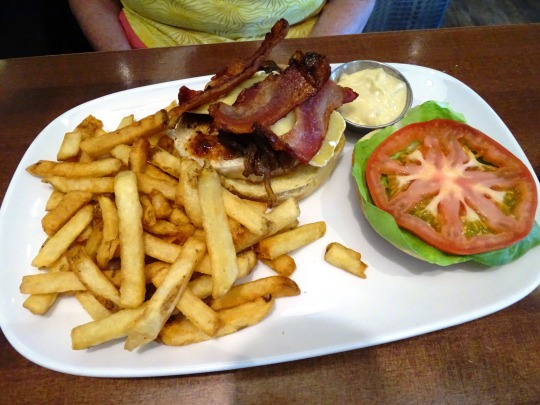




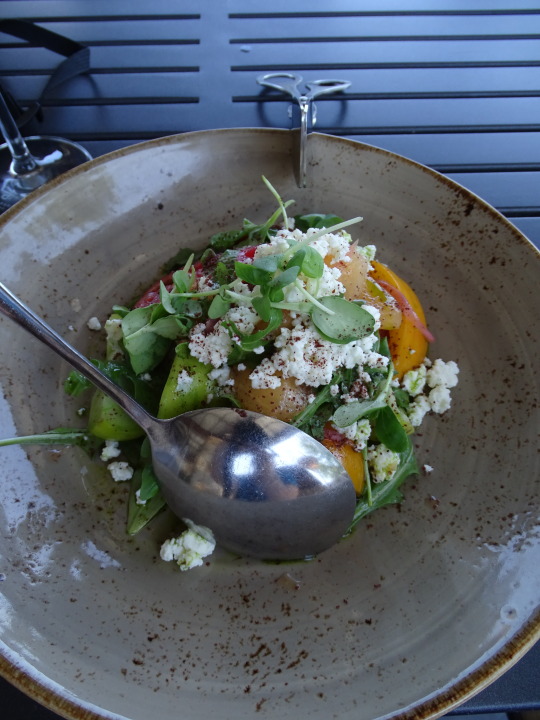

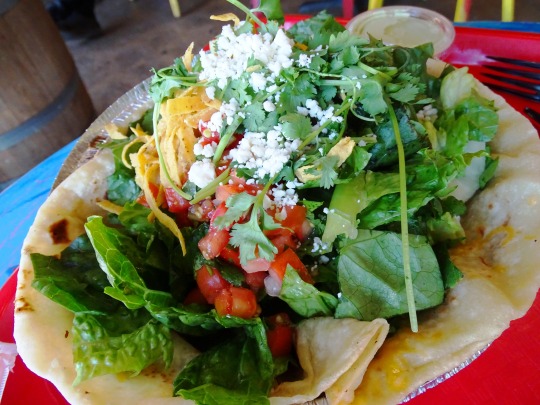
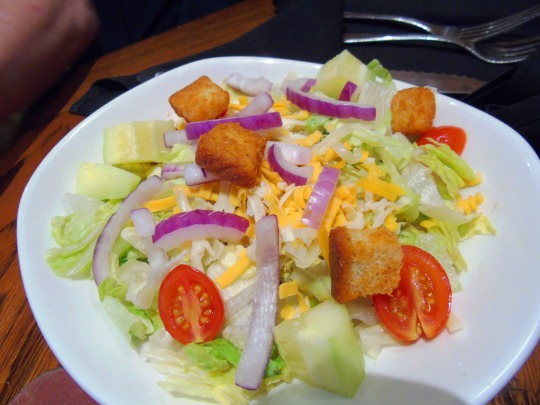



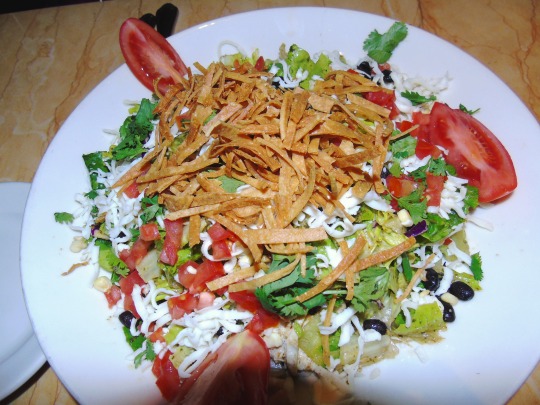

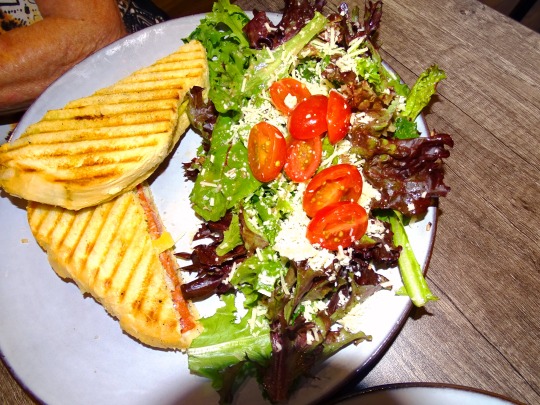

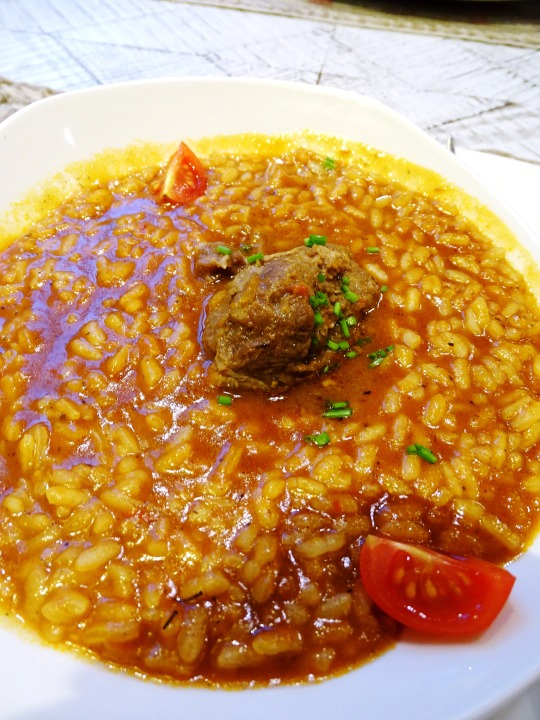




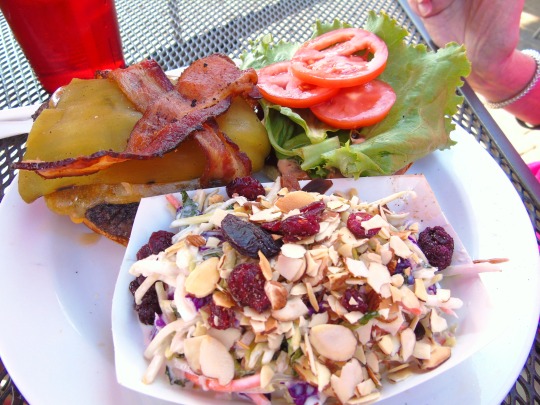

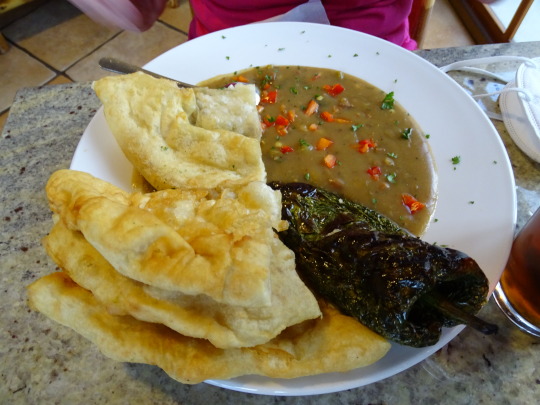
Fresh Tomato Day
Fresh Tomato Day is celebrated on April 6, as a day to appreciate the beauty of fresh tomatoes. Tomatoes are plants that are grown in temperate and tropical regions of the world and are a significant source of umami flavor. They are typically consumed raw or cooked. It is common to find that numerous varieties of the tomato plant are widely grown in temperate climates across the world, with purpose-built greenhouses aiding the production of tomatoes throughout all the seasons of the year. Tomato plants typically grow between three and 10 feet in height, with vines and a weak sprawling stem.
History of Fresh Tomato Day
The tomato is said to have descended or evolved from the “Solanum pimpinellifolium,” which is also known as the currant tomato or wild tomato, native to western South America. These wild tomatoes were smaller than the tomatoes we have in today’s times and they were usually about the size of peas. The domestication, so to speak, of tomatoes, traces back to the Aztecs and other Mesoamerican peoples, who used the fruit fresh and employed its use for cooking. Tomatoes came into Europe through the Spanish, and they became a very regular feature of Spanish food. In other European countries such as France, Italy, and others to the North of Europe, the tomato was initially grown as an ornamental plant, like flowers.
The tomato was met with skepticism as a type of food based on the fact that it was thought to be nightshade by botanists. This skepticism and suspicion were compounded by the acidity of the tomato juice. The tomato was even nicknamed the “poison apple,” because it was believed that it caused aristocrats to get sick and die after eating them. The possible reason for these reactions was that wealthy Europeans of that time, used pewter plates, which were rich in lead, and because tomatoes are so high in acidity, the fruit would leach lead from the plate upon coming in contact with it, eventually leading to led poisoning and eventually death.
Limited knowledge made it impossible for anyone at the time to connect the dots between plate and poison at the time and so the easier alternative was to blame the tomato. The leaves of the tomato and its immature fruit contain tomatin, which could be toxic in large amounts. However, the ripe tomato fruit does not contain tomatin.
Fresh Tomato Day timeline
700 A.D. Earliest Known Use of Tomatoes
The earliest known use of tomatoes traces back to the Aztecs from around 700 A.D. who use them to cook their food.
1800s Migration Brings Tomatoes to America
The mass migration of Italian people to America is credited with the introduction of tomatoes in America.
1889 Esposito of Naples Makes a Tomato Pizza
On a visit of the King and Queen of Italy to Naples in 1889, Esposito makes a pizza with tomato toppings.
2005 Earliest Mention of F.T.D. in Print
The earliest mention of Fresh Tomato Day is in a newspaper.
Fresh Tomato Day FAQs
What is Fresh Tomato Day?
Fresh Tomato Day, celebrated on April 6, is a day meant to appreciate the beauty and benefits of fresh tomatoes.
Are tomatoes healthy?
Yes, they are. Tomatoes are good for the human heart and consuming them once in a while would keep you healthy for longer.
Is a tomato a fruit?
Yes, a tomato is technically a fruit that is sometimes considered a vegetable. It is an edible part of a plant with seeds, and as such, is a fruit.
Fresh Tomato Day Activities
Eat some tomatoes
Host a tomato-throwing party
Share on social media
What better way to celebrate Fresh Tomato Day than to simply eat (or drink) some? Make a tomato sandwich, or order some tomato pizza; either way, you’re good to go.
Another fun idea for Fresh Tomato Day is to host a tomato-throwing party. This would be fun, but be careful not to waste too many tomatoes.
Share all the fun and join the online tomato conversation using the #FreshTomatoDay hashtag. Share the history of the day online!
5 Interesting Facts About Tomatoes
There are 10,000 varieties of tomatoes
The first tomatoes were gold
Tomatoes have color varieties
‘Tomato’ is a Spanish word
China is the largest tomato producer
Tomatoes have up to 10,000 distinct varieties.
The first tomatoes were not red as we know them today, but were gold-colored and widely considered to be aphrodisiacs.
They have varying colors such as purple, green, and white, however, only red tomatoes are displayed at markets for quality standard purposes.
The origin of the word ‘tomato’ is from the Spanish word ‘tomate.’
China produces the largest number of tomatoes in the whole world!
Why We Love Fresh Tomato Day
Tomatoes are healthy
Tomatoes are tasty
Tomatoes can be consumed in various ways
Tomatoes have been proved to be good for the human heart. We love this!
Tomatoes are tasty, especially when cooked or used as a flavoring in food. There’s nothing better than the taste of fresh tomatoes in your spaghetti bolognese!
Tomatoes aren’t only cooked as a soup or used as pizza toppings. They can also be consumed as a healthy drink or simply consumed raw.
Source
#Bison Bacon Burger#Chicken Enchilada#melon tomato salad#Smothered Green Chili Cheeseburger#Bacon Avocado Burger#I don't like fresh tomatoes and I can't eat them#Hero Panini#Navajo Taco#Arroz carridadas#Taco Salad#Chicken Tostadas#Honorary Texan Burger#Fresh Tomato Day#6 April#food#travel#vacation#USA#Spain#summer 2022#2021#original photography#FreshTomatoDay#Canada#2023#Mexican Steak Taco#Chicago Hot Dog
1 note
·
View note
Photo






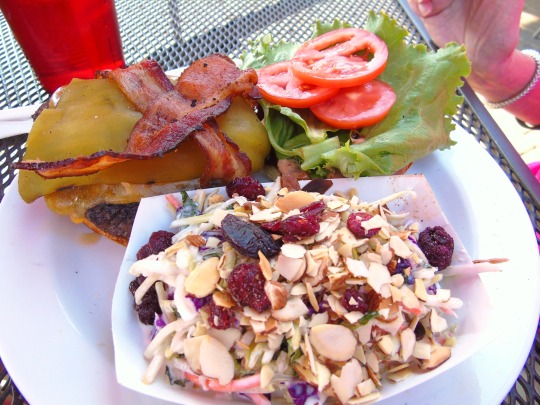



National Walnut Day
Go nuts for walnuts! These crunchy delights pack a punch of flavor and nutrition in every bite. Sprinkle them on salads, bake them into treats, or snack on them straight from the bag. It's a nutty good time!
Go nuts about walnuts in honor of National Walnut Day! This ancient, healthful nut makes a great addition to sweet treats, salads, trail mixes and so many other interesting dishes. While other nuts often take center stage, the walnut is absolutely worth celebrating and appreciating on National Walnut Day.
History of National Walnut Day
As the oldest known tree that has provided food to humans, walnuts have a history that can be traced back for thousands of years. It didn’t take long for humans to discover that the walnut is an easy to store and simple to eat nut. Plus, it travels well and offers great nutritional benefits.
In Persia, the walnut was referred to as the Royal Nut and it was only allowed to be eaten by people of royal heritage. During the reign of Alexander the Great, the walnut was brought to Greece from Persia and it was referred to as the Persian Nut for more than 1000 years. However, over time, the Greek version became smaller and inferior to the Persian walnut. In fact, the Greeks were envious of the Persian walnut, so they brought some Persian cultivars back to Greece to improve their breeds.
The Greek name for the walnut is karyon, which means head. This is actually fairly spot on, because the outside shell resembles a human head and the interior nut looks a bit like a brain!
Walnuts likely made their way further into Europe somewhere between 500–700 BC and then moved west after that. The nut probably traveled to the British Isles with the Roman Empire. It was somewhere around this point that it picked up its name “English walnut”, which is used to distinguish it from the black walnut.
Eventually, the walnut crossed the ocean and found a path to the New World. It was a group of Franciscan Fathers who found that the climate of Southern California was an important one for growing these deciduous trees. And this is likely the reason they picked up the name “mission walnuts”. California walnuts have become so popular that they account for 99% of the commercial walnut industry in the United States, a large portion of walnut trade in the world.
National Walnut Day dates back more than 70 years! It was in 1949 that the Walnut Marketing Board in the United States established the day with the purpose of celebrating and promoting this delicious and nutritious nut. US President Dwight D. Eisenhower made the day a public holiday in 1958 and National Walnut Day has continued to be celebrated every year since that time.
National Walnut Day Timeline
7000 BC Humans cultivate walnuts
The oldest tree food known to man, walnuts are cultivated starting in Persia.
1754 BC First documented account of the walnut
The cultivation of the walnut is mentioned in The Code of Hammurabi, the oldest code of laws in the world.
600 BC Walnut plants arrive in Europe
Around this time, the walnut plant makes its way from Persia into Europe.
17th Century AD Walnuts land in America
English settlers are responsible for bringing walnut plants to the New World.
Late 1900s Walnuts are cultivated in Chile
The climate in Chile does well for growing walnuts and the country eventually becomes the world’s third largest walnut exporter.
How to Celebrate National Walnut Day
Enjoy tons of fun on National Walnut Day by celebrating in style with some of these tasty ideas:
Learn Some Health Benefits of Walnuts
National Walnut Day is a perfect time to get a bit more familiar with some of the health benefits that are offered by this little nut. Take a look at these ways that the walnut is a healthy choice for snacking and baking:
Filled with Antioxidants
High in Healthy Fat
Promotes Gut Health
May Decrease Inflammation
Walnuts contain the most antioxidants of any of the commonly eaten nuts. The high Vitamin E content, melatonin and polyphenols can help to prevent oxidative damage and promote the lowering of “bad” cholesterol.
Omega-3 fat is an essential ALA (alpha-linolenic acid) that is a vital part of the human diet, especially for the prevention of heart disease. A single one ounce serving of walnuts provides a full daily supply of this important nutrient.
Walnuts offer essential bacteria and microbes that help with the functioning of overall gut health.
One of the common triggers for health problems in inflammation and walnuts offer nutrients, such as polyphenols, that can reduce oxidative stress that tends to cause inflammation. This could be beneficial in reducing heart disease, type 2 diabetes, Alzheimer’s disease and even cancer.
Make Some Candied Walnuts
While candied pecans and toasted almonds are often thought of as some favorite snacks made from nuts, candied walnuts are absolutely worth trying out. Candied walnuts are delicious for snacking, adding as a topping to salads or used as a garnish on cakes and other sweet treats. And, they’re super easy to make!
Really, it’s as simple as just three ingredients: walnuts, butter and sugar. Add all of the ingredients to a skillet and heat for five minutes over medium heat, stirring constantly. Separate nuts on parchment paper and allow to cool.
Share Fun Facts About Walnuts
One super clever way to raise awareness about the goodness and health of walnuts might be to learn a few bits of trivia about this nut that can be shared. Tell friends and coworkers about some fun facts while encouraging them to celebrate National Walnut Day in their chosen fashion.
Get started with some of these:
Even since ancient times, walnuts have been used for various health benefits and have even been considered to be medicinal for treating issues such as bad breath, wound healing and reduction of inflammation.
Walnut trees can grow to be very large, up to 60 feet tall. They can produce walnuts for more than 100 years!
Walnuts are best when kept cool, so it’s ideal to store them in the refrigerator or freezer for the best flavor and the longest life.
The state of California produces approximately one billion pounds of walnuts every single year. Now that’s a whole lot of nuts!
Make Baked Goods with Walnuts
Enjoy the delicious National Walnut Day by getting some walnuts for the kitchen and adding them to a variety of baked goods. This might mean adding chopped walnuts to a loaf of banana bread, a selection of oatmeal muffins, a pan of freshly baked brownies or a variety of other tasty baked treats. Be sure to bake up extra treats with walnuts and pass them out at work, share them with neighbors and offer them to family members in observance of National Walnut Day!
National Walnut Day FAQs
Are walnuts good for you?
Some studies have shown that walnuts are a source of vitamins and minerals, as well as lowering “bad” cholesterol.
How to toast walnuts?
Walnuts can be toasted in a single layer for 8-10 minutes at 350 F.
Can dogs eat walnuts?
Though it may not hurt them to have a stray walnut, dog owners should avoid feeding them to dogs as they can be a choking hazard.
Do walnuts go bad?
When exposed to heat for a period of time, walnuts can begin to smell rancid and taste bad.
Do walnuts have protein?
Yes, walnuts have 4.5 grams of protein per ¼ cup.
Source
#Lemon Semifreddo with walnut florentine#Manjar blanco with honey and nuts#dessert#restaurant#salami#olives#Tartufo#Germany#Spain#travel#vacation#Chef's Salad#Chocolate Frey#Lindt & Sprüngli#Lindt#Swiss chocolate is the best#I only eat Swiss chocolate#Lindt Pralines Connaisseurs#Lindt Pralinés du Confiseur#Honorary Texan Burger#USA#National Walnut Day#17 May#original photography#NationalWalnutDay
2 notes
·
View notes
Photo
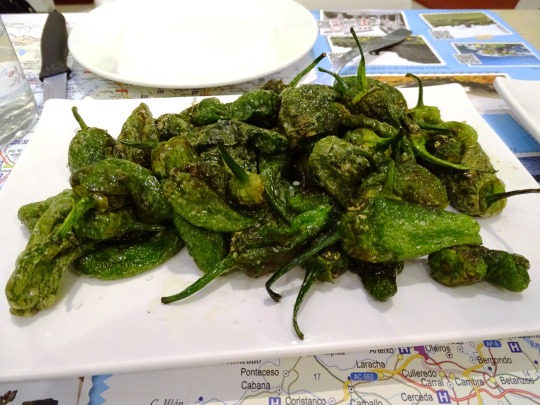

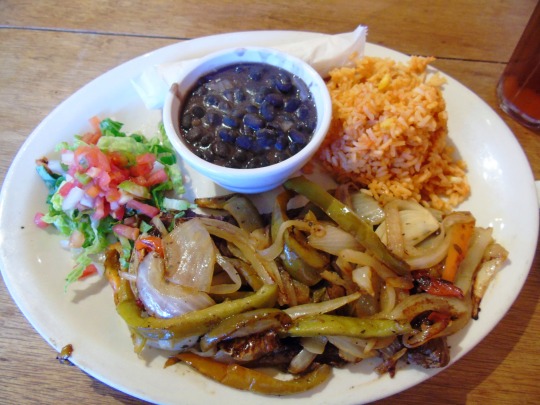

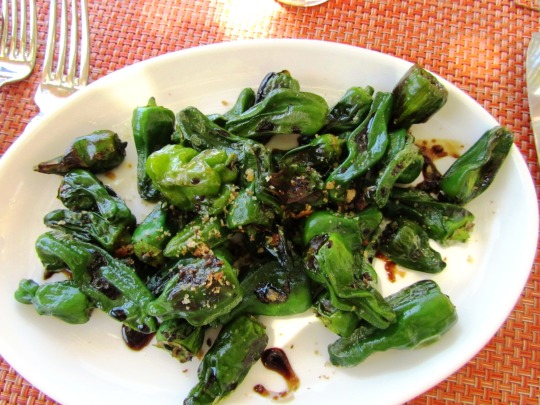

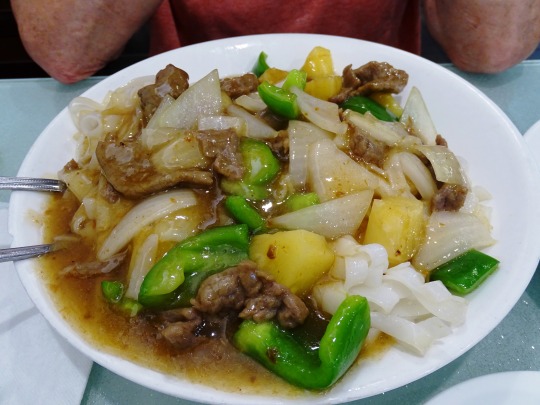



Green Peppers Day
Green peppers, known as green bell peppers or green sweet peppers, have their day today. There are other colors of bell peppers, like red, yellow, and orange, but just the green are celebrated today. Although considered vegetables in the culinary world, they actually are fruit. They are part of the Grossum cultivar group of the Capsicum annuum species, which are part of the Solanaceae family, or nightshades. Native to the tropics of the Americas, they were introduced to Europe and Asia by Spanish and Portoguese explorers in the late fifteenth century. They spread from there and are now grown around the world.
Green peppers have dark, glossy skin that is smooth and firm. They are juicy and crisp to the bite, and mildly bitter, not as sweet in flavor as other bell peppers. But, along with other bell peppers, they are not hot like other peppers: they don't have capsaicin and are the lowest pepper on the Scoville scale. Their flesh is thick, and besides the membrane and seeds, their interior is hollow. Green peppers are high in vitamin C. They contain carotenoids, a colorful antioxidant, and are a very good source of vitamin A, vitamin K, vitamin B6, potassium, manganese, folic acid, and fiber. They have no fat and are low in calories.
Green peppers have a mild flavor and are versatile in the kitchen. They can be eaten raw or cooked. When raw, they can be cut up and eaten with a veggie dip or hummus, top a salad or sandwich, or be used to make pico de gallo or salsa. When cooked, the possibilities of their use are almost endless. They can be baked, roasted, grilled, and prepared in other ways and used in many dishes. Stuffed peppers and pepper steak are common pepper dishes. They are used in casseroles, put on pizzas, sautéed with sausage, to make stir fry, or roasted and put over pasta. Along with celery and onions, green peppers are part of the holy trinity, a variation of the French mirepoix that is used in Cajun and Creole cooking. It is used as a base for gumbos, soups, stews, jambalaya and crawfish étouffée. Mmm, Green Peppers Day sounds tasty!
How to Observe Green Peppers Day
Celebrate by eating green peppers! There are many ways you could do so:
Cut them up and have them raw, perhaps with veggie dip or hummus.
Put them on top of a salad or sandwich.
Have some tortilla chips and pico de gallo.
Make pepper steak, sautée green peppers with sausage, or make another stir fry with green peppers.
Make a homemade pizza and cover it with green peppers.
Make a roasted pepper pasta dish.
Make stuffed peppers, stuffed pepper soup, or stuffed pepper casserole.
You could also grow your own green peppers so you'll have more to eat in the future!
Source
#Padron Peppers#Brix Restaurant & Gardens#I'll be back this summer#USA#travel#original photography#food#restaurant#pepper steak#Rodi Special Pizza#Chicken Pizza#Chicago Special Stuffed Pizza#Thai Coconut-Lime Chicken#Wokad kyckling#Honorary Texan Burger#Spain#Green Peppers Day#GreenPeppersDay#5 August#my least favorite peppers#Sweden#tapas#tourism#vegetables#green bell peppers#green sweet peppers
4 notes
·
View notes
Photo










Fresh Tomato Day
Did you know the best place to store tomatoes is at room temperature (above 55 F) until they've fully ripened. A ripe tomato is red or reddish orange, depending on variety and yields to slight pressure.
Store them stem end up as the "shoulders" are the softest part and bruise most easily. Keep them out of direct sunlight. If you must store them a longer time, place them (after they've ripened fully) in the refrigerator.
Source
#I don't like fresh tomatoes#I can't eat fresh tomatoes#not my burger#USA#not my salad#restaurant#original photography#Fresh Tomato Day#6 April#Honorary Texan Burger#Jalapeno Burger#Chippewa Burger#Avocado Ranch Burger#Santa Fe Salad#MEXICAN TORTILLA SALAD#House Salad#Chicago Hot Dog#Dinner Side Salad#fries#food#Canada#summer vacation
3 notes
·
View notes
Photo










Bacon Day
There’s nothing in this world that doesn’t taste better with Bacon. Whether it’s chocolate covered bacon from the confectioners shop, bacon cheeseburgers, bacon wrapped tater tots, or even bacon covered chapstick, you can’t deny that it’s a delicious tasty treat that’s truly gotten it’s fingers in everywhere.
History of Bacon Day
The origins of Bacon stretches back into the middle ages, with the name originating in Middle English from the word “Bacoun”. Following it back you find it in France as Bako, Germany as Bakko, and old Teutonic as Backe. All of these words mean “back”, and what’s that tell us about Bacon? Piggy got back. But that’s not even the earliest example of bacon, the first bacon was known to come from the Romans, and was known as ‘Petaso’.
Bacon has been a popular method of preserving meat and adding a delicious flavor to it by soaking it in a specialized brine. There were even certain breeds that were specially bred for their copious back meat, and those were the Yorkshire and Tamworth. But it wasn’t always just the back meat that was referred to as Bacon, at one time it referenced any kind of preserved pork, but that usage fell out of practice in the 17th Century.
How to celebrate Bacon Day
This is easily one of the tastiest holidays you can celebrate! The best way of celebrating this dedication to swine delicacies is by indulging in the delicious treats that come from our four hooved friends. You can start by going to an all you can eat breakfast place that has bacon on the menu, trust us, they exist! Then you can head on out to your favorite lunch stop and get your favorite bacony treat, we personally prefer cheeseburgers with extra bacon!
But there’s more to bacon than just meat on meat, bacon is an open-minded kind of food, and has already been known for being part of any of the three major meals of the day. But in recent days it has expanded even more! There’s bacon chocolate milkshakes, and bacon flavored lubes, bacon flavored chewing gum, and a million other variations!
To really get into the spirit of the holiday, you can get one of the hundreds of themed pieces of clothing there are. There’s bacon underwear and bras, pants and pajamas, hats and sunglasses, if you can wear it, it’s been made with bacon patterns applied to it! So get out there and celebrate Bacon Day, and have a delicious new year!
Source
#Bacon Day#BaconDay#30 December#Breakfast Waffle Burger#food#restaurant#travel#original photography#Gommorah Burger#USA#Waterworks Bourbon Burger#Honorary Texan Burger#Bacon Jalapeno Poppers#summer vacation#Bacon Wrapped Onion Rings#Bacon Double Cheese Poutine#Canada#Cheese Bacon Fries#loaded baked potato#steak#fries#Hot Dog#Whitefield Square Burger
1 note
·
View note
Photo










Fresh Tomato Day
Fresh Tomato Day is celebrated on April 6, as a day to appreciate the beauty of fresh tomatoes. Tomatoes are plants that are grown in temperate and tropical regions of the world and are a significant source of umami flavor. They are typically consumed raw or cooked. It is common to find that numerous varieties of the tomato plant are widely grown in temperate climates across the world, with purpose-built greenhouses aiding the production of tomatoes throughout all the seasons of the year. Tomato plants typically grow between three and 10 feet in height, with vines and a weak sprawling stem.
History of Fresh Tomato Day
The tomato is said to have descended or evolved from the “Solanum pimpinellifolium,” which is also known as the currant tomato or wild tomato, native to western South America. These wild tomatoes were smaller than the tomatoes we have in today’s times and they were usually about the size of peas. The domestication, so to speak, of tomatoes, traces back to the Aztecs and other Mesoamerican peoples, who used the fruit fresh and employed its use for cooking. Tomatoes came into Europe through the Spanish, and they became a very regular feature of Spanish food. In other European countries such as France, Italy, and others to the North of Europe, the tomato was initially grown as an ornamental plant, like flowers.
The tomato was met with skepticism as a type of food based on the fact that it was thought to be nightshade by botanists. This skepticism and suspicion were compounded by the acidity of the tomato juice. The tomato was even nicknamed the “poison apple,” because it was believed that it caused aristocrats to get sick and die after eating them. The possible reason for these reactions was that wealthy Europeans of that time, used pewter plates, which were rich in lead, and because tomatoes are so high in acidity, the fruit would leach lead from the plate upon coming in contact with it, eventually leading to led poisoning and eventually death.
Limited knowledge made it impossible for anyone at the time to connect the dots between plate and poison at the time and so the easier alternative was to blame the tomato. The leaves of the tomato and its immature fruit contain tomatin, which could be toxic in large amounts. However, the ripe tomato fruit does not contain tomatin.
Fresh Tomato Day timeline
700 A.D. Earliest Known Use of Tomatoes
The earliest known use of tomatoes traces back to the Aztecs from around 700 A.D. who use them to cook their food.
1800s Migration Brings Tomatoes to America
The mass migration of Italian people to America is credited with the introduction of tomatoes in America.
1889 Esposito of Naples Makes a Tomato Pizza
On a visit of the King and Queen of Italy to Naples in 1889, Esposito makes a pizza with tomato toppings.
2005 Earliest Mention of F.T.D. in Print
The earliest mention of Fresh Tomato Day is in a newspaper.
Fresh Tomato Day FAQs
What is Fresh Tomato Day?
Fresh Tomato Day, celebrated on April 6, is a day meant to appreciate the beauty and benefits of fresh tomatoes.
Are tomatoes healthy?
Yes, they are. Tomatoes are good for the human heart and consuming them once in a while would keep you healthy for longer.
Is a tomato a fruit?
Yes, a tomato is technically a fruit that is sometimes considered a vegetable. It is an edible part of a plant with seeds, and as such, is a fruit.
Fresh Tomato Day Activities
Eat some tomatoes
Host a tomato-throwing party
Share on social media
What better way to celebrate Fresh Tomato Day than to simply eat (or drink) some? Make a tomato sandwich, or order some tomato pizza; either way, you’re good to go.
Another fun idea for Fresh Tomato Day is to host a tomato-throwing party. This would be fun, but be careful not to waste too many tomatoes.
Share all the fun and join the online tomato conversation using the #FreshTomatoDay hashtag. Share the history of the day online!
5 Interesting Facts About Tomatoes
There are 10,000 varieties of tomatoes
The first tomatoes were gold
Tomatoes have color varieties
‘Tomato’ is a Spanish word
China is the largest tomato producer
Tomatoes have up to 10,000 distinct varieties.
The first tomatoes were not red as we know them today, but were gold-colored and widely considered to be aphrodisiacs.
They have varying colors such as purple, green, and white, however, only red tomatoes are displayed at markets for quality standard purposes.
The origin of the word ‘tomato’ is from the Spanish word ‘tomate.’
China produces the largest number of tomatoes in the whole world!
Why We Love Fresh Tomato Day
Tomatoes are healthy
Tomatoes are tasty
Tomatoes can be consumed in various ways
Tomatoes have been proved to be good for the human heart. We love this!
Tomatoes are tasty, especially when cooked or used as a flavoring in food. There’s nothing better than the taste of fresh tomatoes in your spaghetti bolognese!
Tomatoes aren’t only cooked as a soup or used as pizza toppings. They can also be consumed as a healthy drink or simply consumed raw.
Source
#Smothered Green Chili Cheeseburger#Bacon Avocado Burger#I don't like fresh tomatoes#Hero Panini#Navajo Taco#Arroz carridadas#Taco Salad#Chicken Tostadas#Honorary Texan Burger#Fresh Tomato Day#6 April#food#travel#vacation#USA#Spain#summer 2022#2021#original photography#Coleslaw#fries#national day#FreshTomatoDay
1 note
·
View note
Photo
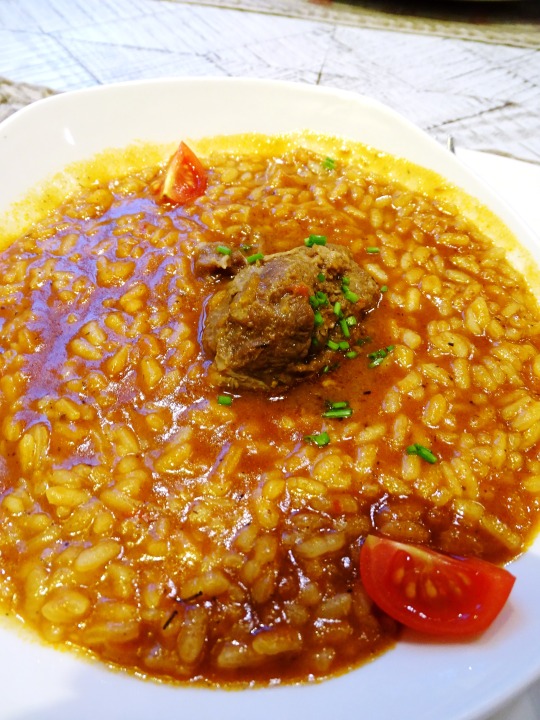







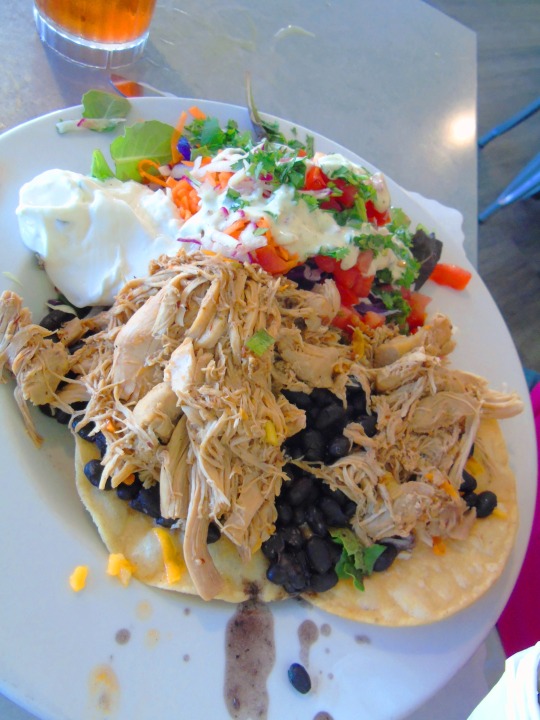
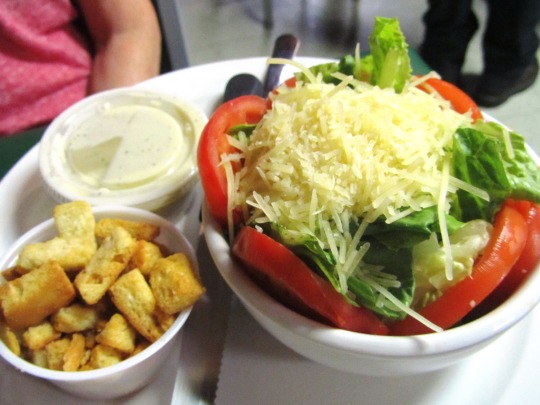
Fresh Tomato Day
April 6th every year celebrate Fresh Tomato Day! Tomatoes are chosen as one of the best foods! They contain a lot of great vitamins and minerals that we all need. Tomatoes are known to help prevent diseases like heart disease and high blood pressure. Lycopene and vitamins present in tomatoes are also known to be antioxidants that help prevent many types of cancer. What a wonderful healthy dish!! Celebrate the day with tomatoes in salads and sandwiches, or make your favorite salsa or ketchup!
History of Fresh Tomato Day
The earliest print mentions an April "Fresh Tomato Day" that Cooks Info has seen since 2005 in Indiana.
Liking lycopene for Fresh Tomato Day
I love my tomatoes: grape, cherry, on the vine, fresh from the vine a little warm with a dusty coating on it a little sweet with a hint of satisfaction something I can't identify.
I find that tomatoes are one of those vegetables (technically a fruit) that almost everyone enjoys. Perfect as a snack, sliced on a salad, diced or sliced on pizza or mashed into a sauce - tomatoes are high in water, low in calories and have some amazing health benefits.
While an average tomato has only 25 calories, 1.5 g of fiber and almost 300 mg of potassium 9 (a good thing), there are other added benefits. Phytochemicals!
Phytochemicals or “phytonutrients” are chemical substances found in plants (hence the “phyto”) that have health benefits. These are good things.
Lycopene is one of these substances. Years ago, I remember that research looked at lycopene as a potent antioxidant with a potential role in prostate cancer. Most notably, it helps reduce the risk of prostate cancer. No offense to the men in my life, but I've always thought that was a bit discriminatory, and it's certain that lycopene will eventually be associated with a reduced risk of other cancers, other than prostate cancer.
I need to start charging to predict the future, because for sure, lycopene has been linked to a reduction in colorectal, breast, endometrial, lung, and pancreatic cancers in addition to prostate cancer. In fact, eating more fruits and vegetables has been linked to a lower overall risk of cancer.
Lycopene is known to be in tomatoes, however, there are likely dozens of undiscovered phytonutrients in tomatoes (and many fruits and vegetables). While you can buy lycopene for supplements, why bother? Food is a lot cheaper.
But what's new is that the lycopene in tomatoes is best absorbed along with some fat. So ketchup, tomato soup, or my favorite, Caprese anything is the best way to get lycopene. Who doesn't love bright red tomatoes, FRESH buffalo mozzarella, fresh basil and olive oil (and a little balsamic too)?
I love the Caprese Salad, the Caprese sandwich from “Which Wich” and I also enjoy an omelette with Caprese at Miss Shirley's in Baltimore. That's a big deal, since I'm a french roast chicken.
However, if you like your tomatoes fresh, that's okay, you'll still get a lot of benefits out of them. Tomatoes are a rich source of vitamin C and vitamin A in the form of beta-carotene. These are powerful antioxidants.
Here's the bottom line: tomatoes are good for you, have a lot of health benefits, and if tomatoes aren't so great after all (very unlikely) there's no harm in eating them either.
Therefore, let enjoy this beautiful red, white and green Caprese Salad this day together in honor of beloved fresh tomatoes.
Why should I eat this?
Tomatoes are full of the antioxidant lycopene, which protects from damage to our cells and may help reduce the risk of some forms of cancer. Tomatoes are also high in Vitamin C which boosts our immune system and Vitamin A which promotes good vision, strengthens our immune system and promotes cell growth.
Source
#Arroz carridadas#I don't like fresh tomatoes#can't eat them#restaurant#food#original photography#FreshTomatoDay#Fresh Tomato Day#6 April#Spain#salad#Hickory Burger#Sweden#Honorary Texan Burger#Mexican Tortilla Salad#not my salads#Taco Salad#Chicken Tostadas#USA#Avocado Ranch Burger#vegetables#fruit#flora#tourism
0 notes
Photo










Green Peppers Day
Green Peppers Day celebrates these versatile fruits. Usually referred as a vegetable, green peppers are technically a fruit. Green peppers are often referred to as sweet peppers and are very high in vitamin C, are an excellent source of carotenoids, and are also a very good source of fiber, Vitamin A, Vitamin K, Vitamin B6, Potassium and Manganese. WHFoods.com refer to peppers as “the Christmas ornaments of the vegetable world with their beautifully shaped glossy exterior that comes in a wide array of vivid colors ranging from green, red, yellow, orange, purple, brown to black.” Green peppers can be eaten raw or cooked.
Ways to eat green peppers include: sauteed with Italian sausage or in a pasta, stuffed, on pizza, raw with a veggie dip, hummus, or on a sub sandwich, in a salad, pepper steak, or in a stir fry.
Source
#Peppers Steak#Peppers Salad#Green Peppers Day#GreenPeppersDay#USA#5 August#food#restaurant#Beef Satay#Chicken Pizza#Lennart Special Pizza#Wokad kyckling#Padron Peppers#GOMMORAH Burger#Honorary Texan Burger#Chicago Special Stuffed Pizza#Sweden#travel#vacation#vegetables#fries#rice
0 notes
Photo










National Hamburger Day
National Hamburger Day is celebrated on May 28 of every year. National Hamburger Day is a day to celebrate the Hamburger. Hamburger is a sandwich contains one or more cooked patties of ground meat usually beef which is placed inside a sliced bread roll or bun. The Patty may be barbecued, pan fried, or flame broiled. National Hamburger Day is a perfect day to celebrate the Hamburger with your family members and friends.
“From a young age, I understood the idea of balanced flavor – the reason you put ketchup on a hamburger. I was that kid who wouldn’t eat something if there was something missing. I never really understood it until I began cooking professionally, balancing acids, sweets, spicy flavors and fat.” – Michael Mina
History of National Hamburger Day
The creator or inventor of National Hamburger Day is still unknown, and origin of Hamburger also remains unclear. The popular book of “The Art of Cookery made Plain and Easy” by Hannah Glasse included the Hamburger recipe in 1758 as “Hamburg Sausage,” which suggested to serve it as roasted with toasted bread under it. Hamburg steak is stated to have been served between two slices of bread on the Hamburg America Line, which began proceedings in 1847. Each of these may mark the invention of the Hamburger, and explain the name. Hamburgers are most often served with cheese, tomato, lettuce, bacon, onion, pickles, or chiles, and condiments like mustard, mayonnaise, ketchup, relish, special sauce and they are frequently placed on sesame seed buns. The hamburger covered with a slice of cheese is called Cheeseburger.
How to Celebrate National Hamburger Day
Celebrating the Nationaal Hamburger Day is quite easy and very simple to remember. Just celebrate the day by eating Hamburger with your friends and family members. For more fun, make a Hamburger of your own and share them with your family members and friends. You can organize a party with Hamburger recipe by gathering your friends, family members, and neighborhoods.
Source
#NationalHamburgerDay#National Hamburger Day#28 May#national day#food#restaurant#Kimchi Burger#Honorary Texan Burger#Kansas City Burger#Gott's Roadside#chili fries#garlic fries#Original 5 Napkin Burger#Kitchen Sink Burger#usa#canada#Whitefield Sq Burger#Triple Triple Burger#jumbo burger#Red Chili Burger#vacation#travel
1 note
·
View note
Photo



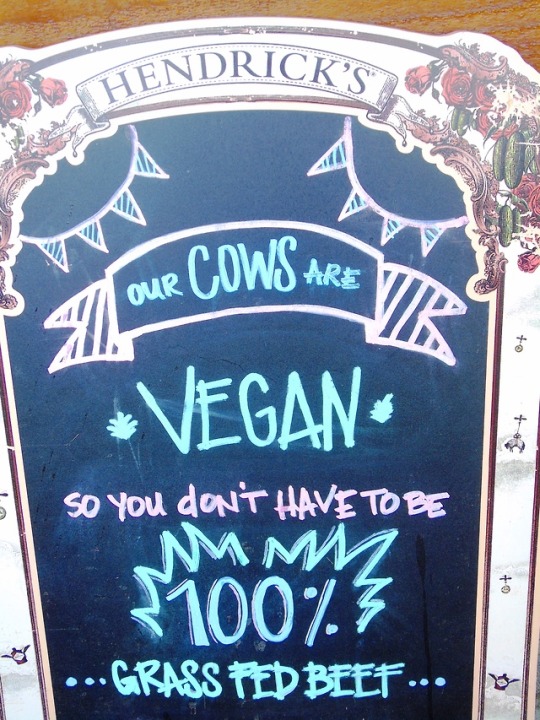
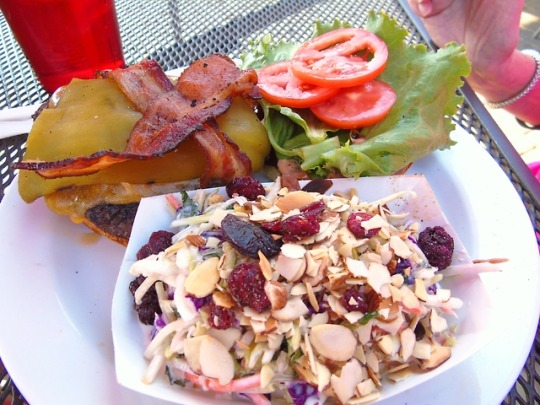



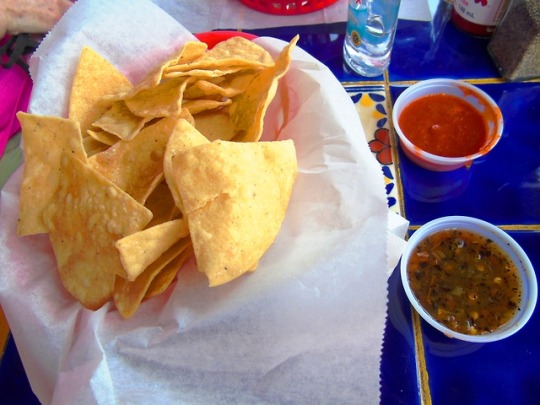
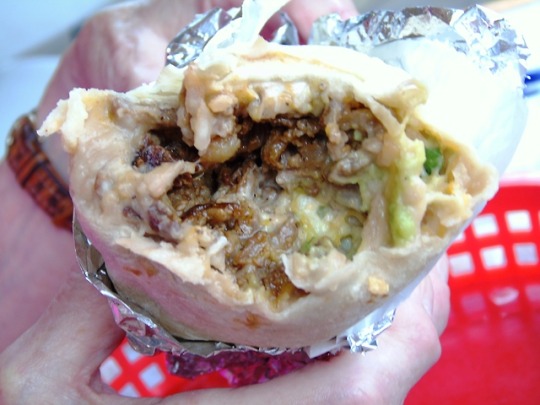
Food in South Lake Tahoe
Our cows are vegan so you don’t have to be.
A burrito is a dish in Mexican and Tex-Mex cuisine that consists of a large wheat tortilla with various other ingredients. It is wrapped into a closed-ended cylinder that can be picked up, in contrast to a taco, where the tortilla is simply folded around the fillings. The tortilla is sometimes lightly grilled or steamed to soften it, make it more pliable, and allow it to adhere to itself when wrapped. A wet burrito, however, is covered in sauce and therefore cannot be picked up.
In Mexico, meat and refried beans are frequently the only fillings. In the United States, however, burrito fillings may include a large combination of ingredients such as Mexican-style rice or plain rice, boiled beans or refried beans, lettuce, salsa, meat, guacamole, cheese, sour cream and various vegetables. Burrito sizes vary greatly and some can be very large.
The word burrito means "little donkey" in Spanish, being the diminutive form of burro, or "donkey". The name burrito, as applied to the dish, possibly derives from the appearance of bedrolls and packs that donkeys carried.
In other regions of Mexico, such as in the state of Tamaulipas, similar types of food are known as "flautas" (flute).
Before the development of the modern burrito, the Mesoamerican peoples of Mexico used corn tortillas in 10,000 B.C. to wrap foods, with fillings of chili peppers, tomatoes, mushrooms, squash, and avocados. Historically, the Pueblo peoples of the Southwestern US also made tortillas filled with beans and meat sauce and prepared much like the modern burrito. But these preparations could also be said to be the origin of the simpler taco, rather than the modern burrito.
The precise origin of the modern burrito is not known. Some have speculated that it may have originated with vaqueros, the cowboys of northern Mexico in the 19th century. In the 1895 Diccionario de Mexicanismos, the burrito or taco was identified as a regional item from the Mexican state of Guanajuato and defined as "Tortilla arrollada, con carne u otra cosa dentro, que en Yucatán llaman coçito, y en Cuernavaca y en Mexico, taco" (A rolled tortilla with meat or other ingredients inside, called 'coçito' in Yucatán and 'taco' in the city of Cuernavaca and in Mexico City).
An oft-repeated piece of folk history is the story of a man named Juan Méndez who sold tacos at a street stand in the Bella Vista neighborhood of Ciudad Juárez during the Mexican Revolution period (1910–1921), while using a donkey as a transport for himself and his food, To keep the food warm, Méndez wrapped it in large homemade flour tortillas underneath a small tablecloth. As the "food of the burrito" (i.e., "food of the little donkey") grew in popularity, "burrito" was eventually adopted as the name for these large tacos.
Another creation story tells of Ciudad Juárez in the 1940s, where a street food vendor created the tortilla-wrapped food to sell to poor children at a state-run middle school. The vendor would call the children his "burritos", because burro is a colloquial term for a dunce or dullard. Eventually, the somewhat derogatory, but endearing, term for the children was transferred to the food that they ate.
In 1923, Alejandro Borquez opened the Sonora Cafe in Los Angeles, which later changed its name to El Cholo Spanish Cafe. Burritos first appeared on American restaurant menus at the El Cholo Spanish Cafe in Los Angeles during the 1930s. Burritos were mentioned in the U.S. media for the first time in 1934, appearing in the Mexican Cookbook, a collection of regional recipes from New Mexico that was written by historian Erna Fergusson.
Source: Wikipedia
#Ruby Soho#Honorary Texan Burger#California Burger Company#fries#food#drink#don't drink and drive#coleslaw#funny sign#Our cows are vegan so you don’t have to be.#Ice Cream Sandwich#Maya's Mexican Grill#Jarritos Mandarin#soft drink#Super Chile Verde Burrito#taco#salsa#Asatas Burrito Super#hole in the wall#South Lake Tahoe#california#usa#summer 2017#travel#photography#photoset#tourism#vacation
5 notes
·
View notes
Photo










South Lake Tahoe, CA
South Lake Tahoe is the most populous city in El Dorado County, California, United States, in the Sierra Nevada. As its name suggests, the city is located on the southern shore of Lake Tahoe.
The city's population was 21,403 at the 2010 census, down from 23,609 at the 2000 census. The city extends about 5 miles (8 km) west-southwest along U.S. Route 50, also known as Lake Tahoe Boulevard. The east end of the city, on the California-Nevada state line right next to the town of Stateline, Nevada, is mainly geared towards tourism, with T-shirt shops, restaurants, hotels, and Heavenly Mountain Resort with the Nevada casinos just across the state line in Stateline. The western end of town is mainly residential, and clusters around "The Y", the X-shaped intersection of US 50, State Route 89, and the continuation of Lake Tahoe Boulevard after it loses its federal highway designation.
The city incorporated in 1965 by combining the previously unincorporated communities of Al Tahoe, Bijou, Bijou Park, Stateline, Tahoe Valley, and Tallac Village. A post office was established in 1967.
Gambling arrived at the Lake in 1944, when Harvey's Wagon Wheel Saloon and Gambling Hall opened in Nevada as one of the area's first gaming establishments. Competition soon sprang up and so did the need for more permanent accommodations. By the 1950s, roads began to be plowed year-round, enabling access to permanent residences. When the 1960 Winter Olympics came to Squaw Valley, Lake Tahoe was put firmly on the map as the skiing center of the western United States.
In 2012, the Lakeview Commons Park was renamed. "The Washoe Tribe has presented the name Tahnu Leweh (Pronounced Tah-New Lay-Way) which, in native language, means 'all the people's place.' It is a name the Tribe would like to gift to El Dorado County and South Lake Tahoe as a symbol of peace, prosperity and goodness."
Source: Wikipedia
#South Lake Tahoe#wood carving#clock#cityscape#Chainsaw Sculpture by Jerry Toste#public art#funny sign#meat lover#nevada stateline#Pony Express Marker#Chevy Tahoe in Tahoe#my rental car#sunset#Honorary Texan Burger#Super Chile Verde Burrito#California Burger Company#Maya's Mexican Grill#food#california#usa#summer 2017#travel#tourism#vacation#road trip#soft drink#jarritos#soda#good mexican food
1 note
·
View note
Photo










National Hamburger Day
National Hamburger Day is celebrated on May 28 of every year. National Hamburger Day is a day to celebrate the Hamburger. Hamburger is a sandwich contains one or more cooked patties of ground meat usually beef which is placed inside a sliced bread roll or bun. The Patty may be barbecued, pan fried, or flame broiled. National Hamburger Day is a perfect day to celebrate the Hamburger with your family members and friends.
“From a young age, I understood the idea of balanced flavor – the reason you put ketchup on a hamburger. I was that kid who wouldn’t eat something if there was something missing. I never really understood it until I began cooking professionally, balancing acids, sweets, spicy flavors and fat.” – Michael Mina
History of National Hamburger Day
The creator or inventor of National Hamburger Day is still unknown, and origin of Hamburger also remains unclear. The popular book of “The Art of Cookery made Plain and Easy” by Hannah Glasse included the Hamburger recipe in 1758 as “Hamburg Sausage,” which suggested to serve it as roasted with toasted bread under it. Hamburg steak is stated to have been served between two slices of bread on the Hamburg America Line, which began proceedings in 1847. Each of these may mark the invention of the Hamburger, and explain the name. Hamburgers are most often served with cheese, tomato, lettuce, bacon, onion, pickles, or chiles, and condiments like mustard, mayonnaise, ketchup, relish, special sauce and they are frequently placed on sesame seed buns. The hamburger covered with a slice of cheese is called Cheeseburger.
How to Celebrate National Hamburger Day
Celebrating the Nationaal Hamburger Day is quite easy and very simple to remember. Just celebrate the day by eating Hamburger with your friends and family members. For more fun, make a Hamburger of your own and share them with your family members and friends. You can organize a party with Hamburger recipe by gathering your friends, family members, and neighborhoods.
Source
#National Hamburger Day#NationalHamburgerDay#28 May#USA#Canada#travel#Kimchi Burger#street food#restaurant#original photogrpahy#summer vacation#Original 5 Napkin Burger#Kitchen Sink Burger#Forfait Burger#some of the best burgers I've ever had#Manly Burger#Waterworks Bourbon Burger#Triple Triple Burger#Whitefield Square Burger#Honorary Texan Burger#Jumbo Burger
0 notes
Photo










Many people spend time stressing over their diet, and what they should or shouldn’t eat, mainly because today’s world is filled with magazine covers sporting perfectly toned, perfectly tanned models that constantly make us feel inadequate. The various health food fads that seem to come and go every few weeks definitely don’t help, either—as it turns out, a gluten-free diet is not particularly good for anyone who isn’t actually allergic to gluten, juice cleanses deprive us of the protein and fat our bodies need to function properly, and taking too many vitamin supplements just makes our urine expensive when our bodies flush the excess. If you, like many people these days, are beginning to feel disillusioned with all of these things, you will be glad to hear about Eat What You Want Day.
The History of Eat What You Want Day
Eat What You Want Day was created by Thomas and Ruth Roy of wellcat.com to help people break away from the frustrating health and diet trends of our times, if for only one day, and just let go and enjoy life a little. Most nutritionists seem to agree that giving yourself a break every now and again can actually be good for us, and that forcing ourselves to eat only low-calorie, tasteless foods for prolonged periods of time is likely to cause us to suddenly gorge on everything in sight when our determination wears off.
How to Celebrate Eat What You Want Day
It shouldn’t be too hard to imagine how to celebrate this holiday, really. You can eat whatever you want, isn’t that enough cause for celebration? Everyone is different, so for some people, this will mean pigging out on junk food. They will stop counting calories and go berserk, eating everything from ice cream to chocolate to cake and pie, and then some cookies with ice cream washed down with hot chocolate, and then some ice cream cake. You get the picture.However, nowhere in the holiday’s description does it say that you have to take this route to gastronomic satisfaction. Aficionados of gourmet cuisine can choose to celebrate by splurging on a meal at a five star restaurant. Do you love lobster, but rarely order it because of its price tag? Understandable, but today is the day to take a break. So call the poshest place in your city and spend an evening feasting on your favorite delicacies and perhaps washing them down with a nice bottle of wine. Or, alternatively, you can try to recreate a favourite childhood meal in your home. Did your Mom use to make the best macaroni and cheese? Call her up and get the recipe! Nothing beats a good comfort food to make us feel full, happy and sleepy all at the same time, so forget about fat and carbs just this once and enjoy a bowl (or pot) of that filling, creamy goodness. Or maybe you’re a strict vegetarian who can’t help but miss steak or shrimp every now and then—if so, maybe you should treat yourself to something you wouldn’t usually eat just to reward your body for the tasty things it has to go without on a daily basis? The key is to eat something that you truly enjoy, so whatever food that is for you, get celebrating!
Source
#National Eat What You Want Day#EatWhatYouWantDay#11 May#national day#food#restaurant#Kimchi Burger#garlic fries#chili fries#ULTIMATE RED VELVET CAKE CHEESECAKE#Honorary Texan Burger#Jaime-Style Wet Burrito#Stuffed Pizza Special#Chicago Hot Dog#corn dog#Lavender Ice Cream#steak#dessert#photography#travel#usa#vacation#good food
0 notes